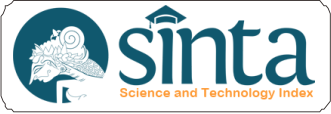Implementasi Extensive Reading Activity Dalam Pengajaran Mata Kuliah Reading Pada Mahasiswa IAIN Manado
Abstract
The purpose of the research is to describe the implementation of Extensive Reading Activity in Reading Comprehension subjects for IAIN Manado students. The research used a qualitative descriptive method. The data were collected through field notes, observation, documentation, and interview. The subjects of this research were students of Tadris Bahasa Inggris IAIN Manado. The findings show that the lecturer had implemented the Extensive Reading Activity in the Reading subject. The implementation of the Extensive Reading Activity for Students of Tadris Bahasa Inggris IAIN Manado can be concluded that there are many advantages in reading skills: understanding vocabulary, structure, grammar, and finding ideas or general descriptions in a text. The Extensive Reading approach can increase students' knowledge and worldview, foster attitudes and motivation towards reading habits, so reading is a fun activity and improves their Reading Skills. However, the Extensive Reading approach cannot replace the Intensive Reading approach. Moreover, Extensive Reading Activity is an alternative way of teaching and learning Reading skills. Through this research, it is hoped that it can provide an overview of Extensive Reading Activity's implementation, especially in the Reading subject, to be used as a reference for further research.
References
Beglar, David, and Alan Hunt. 2014. “Pleasure Reading and Reading Rate Gains.” 20.
Biggam, J. 2008. “Succeeding with Your Masters Dissertation a Step by Step Approach.”
Chien, Chiu-Kuei Chang, and Kuo-Jen Yu. 2015. “Applying Extensive Reading to Improve Unmotivated Learners‘ Attitudes toward Reading in English.” 25.
Chiu-Kuei Chang Chien and Kuo-Jen Yu. 2015. “Applying Extensive Reading to Improve Unmotivated Learners‘ Attitudes toward Reading in English.” International Journal of Learning, Teaching and Educational Research 13.
Day, Bamford. 2002. Top Ten Principles for Teaching Extensive Reading. Reading in a Foreign Language.
Day, R. R. 2015. “Extending Extensive Reading.” Reading in a Foreign Language.
Day, R. R. and Bamford, J. 2004. “Extensive Reading Activities for Teaching Language.” Cambridge: Cambridge University Press.
Edy, Sarwo. 2014. “The Effectiveness of Extensive Reading on Students’ Reading Comprehension Achievement as Observed from Students’ Motivation.” Jurnal Pendidikan Humaniora 2(1):54–58. doi: 10.17977/jph.v2i1.4443.
Ferdila, Raihani. 2014. “THE USE OF EXTENSIVE READING IN TEACHING READING.” Journal of English and Education 13.
Fredricka L. Stoller. 2015. “Viewing Extensive Reading from Different Vantage Points.” Reading in a Foreign Language 27.
Grabe, W. 2009. “Reading in a Second Language: Moving from Theory to Practice.” Northern Arizona University: Cambridge University Press.
Huffman, J. 2014. “Reading Rate Gains during a One-Semester Extensive Reading Course.” Reading in a Foreign Language.
Lyutaya, Tatiana. 2011. “Reading Logs: Integrating Extensive Reading with Writing Tasks.” N U M B E R (1):9.
Made Frida Yulia. 2018. “EXTENSIVE READING FOR INDONESIAN UNIVERSITY STUDENTS: AN ALTERNATIVE FRAMEWORK FOR IMPLEMENTATION.” LLT Journal: A Journal on Language and Language Teaching.
McLean, S and Rouault, G. 2017. “The Effectiveness and Efficiency of Extensive Reading at Developing Reading Rates.”
Mermelstein, David. 2014. “Improving EFL Learners’ Reading Levels through Extensive Reading.” 14.
Nakanishi, T. 2015. “A Meta-Analysis of Extensive Reading Research.” TESOL Quarterly.
Ng, Qiu Rong, Willy A. Renandya, and Miao Yee Clare Chong. 2019. “EXTENSIVE READING: THEORY, RESEARCH AND IMPLEMENTATION.” TEFLIN Journal - A Publication on the Teaching and Learning of English 30(2):171. doi: 10.15639/teflinjournal.v30i2/171-186.
Puji, Purwati. 2015. “THE IMPLEMENTATION OF EXTENSIVE READING ACTIVITY TO TEACH READING A DESCRIPTIVE TEXT TO THE SEVENTH GRADERS OF SMP MUHAMMADIYAH 4 SURABAYA.” 3.
Qiu Rong Ng, Willy A Renandya, and Miao Yee Clare Chong. 2019. “Extensive Reading: Theory, Research and Implementation.” TEFLIN Journal - A Publication on the Teaching and Learning of English 30.
Renandya, W. A. 2016. “Should You Be Teaching Reading Intensively or Extensively? In D. Shaffer & M. Pinto (Eds).” Proceedings of the 24th Annual Korea TESOL International Conference: Shaping the Future: With 21st Century Skills.
Ro, Eunseok. 2014. “A Case Study of Extensive Reading with an Unmotivated L2 Reader.” 21.
Suk, N. 2016. “The Effects of Extensive Reading on Reading Comprehension, Reading Rate, and Vocabulary Acquisition.” Reading Research Quarterly.
Webb, S and Chang, A. 2015. “Second Language Vocabulary Learning through Extensive Reading with Audio Support: How Do Frequency and Distribution of Occurrence Affect Learning?” Language Teaching Research.
Yopp, Ruth Helen. 2001. Literature-Based Reading Activities. California: Pearson.











